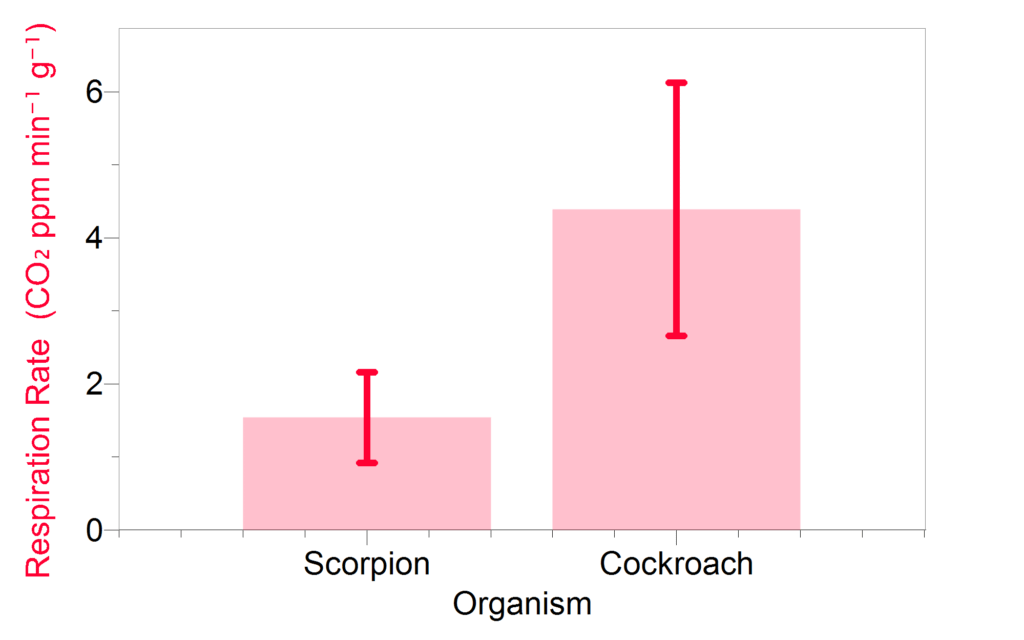Darwin’s theory of evolution is a central concept in biology, and many instructors have been asking how our sensors can be used to teach evolutionary concepts. Experiments that investigate comparative physiology are often a good place to start, and Dr. Sara Tallarovic at the University of the Incarnate Word in San Antonio, Texas, has developed a simple activity that works well. In this activity, Dr. Tallarovic has her students investigate the comparative respiratory physiology of members of the phylum Arthropoda using a Vernier CO2 Gas Sensor.
While both scorpions and cockroaches are found within the phylum Arthropoda and are similar in size, they are categorized in different classes and occupy different niches. For example, desert scorpions live in hot, arid, desert environments and survive with minimal amounts of water and food, while cockroaches live in warm, humid, tropical environments and constantly forage for food. Scorpions and cockroaches also have very different respiratory systems. Scorpions have specialized respiratory structures in their abdomen called book lungs, so called as they resemble a book. In contrast, cockroaches have a specialized tracheal system, which resembles a series of air-filled tubes that are located throughout the animal.

Dr. Tallarovic has her students measure the respiration rate of scorpions and cockroaches using a respiration chamber and the CO2 Gas Sensor. The students measure the respiration rate and then compile the class data to find the mean and standard deviation of the respiration rate for each species. An independent t-test is then done to determine if the respiration rates are significantly different. As can be seen in the graph, scorpions have a lower respiration rate than cockroaches, suggesting that each species has evolved to occupy different ecological niches.
Dr. Tallarovic has graciously allowed us to share her experimental write-up. You can find the student and teacher instructions, along with a simple primer on how to conduct statistical tests below.
